IELTS Academic Writing Task 1 Sample 1
NOTE: This is an authentic image representing authentic information. The image was not created especially for IELTS but perfectly serves the purpose of preparing for the IELTS exam.
Instructions:
The purpose of this sample is to show how a good response can be created following a simple guideline or steps. We explained these steps in our article, "How to Write IELTS Academic Task 1." If you haven't read it yet, please read it now so the steps and instructions of this tutorial can benefit you. You can also download this sample as a separate document
Step 1 - Read the instructions carefully:
So our task looks like this:
You should spend about 20 minutes on this task.
The graph above shows the Russian Defense Spending as compared to the percent of Russia's total budget .
Summarize the information by selecting and reporting the main features, and make comparisons where relevant.
You should write at least 150 words.
By reading the instructions we can clearly see that we need to 'select' and 'report' the main features of the graph and where relevant provide 'comparisons.' This is all part of the bigger intent to 'summarize' the bar graph.
Step Two: Observe Significant and Important information
So, as we look at the two bar graphs we need to start answering a handful of questions:
1. What is the title of the chart/illustration?
- The basic title for this graph is "Russian Defence Spending"
2. What are the measurable values? (time elements such as years, months, etc; percentages, thousands, 100 thousands.)
- Our measurable values are:
- Roubles by Trillions
- Years 2010 - 2015
- Percent of Total Russian Budget
3. What are the noticeable trends?
- When we look at the graph we see a steady increase in defense spending that corresponds to a steady, but minor increase in Russia's budget. We also see in the graph on the right that the rise in defense spending is proportionate to the rise in overall budget.
4. What are the prominent or features of the illustration. These often are high points and low points, sharp contrasts and other things that ‘stand out’.
- The obvious prominent feature of both graphs is the sharp and drastic increase in spending and the overall budget that is expected to happen in the year 2015.
This information will be important for us as we begin to write the introduction and supporting paragraphs to our essay.
Step Three: Write the Introduction
remember we want to summarize the main point of the illustration and include essential details but we do not want to copy from the IELTS question. So in the Introduction we will state what we are looking at (two bar graphs), What they represent (Defense Spending from 2010 to 2015). So a good introduction for these Bar Graphs could be:
The two bar graphs represent the amount of Russian Roubles in Trillions, spent on defense from the years 2010 to 2014 with expected spending in 2015 as well as the percent of Russia's total budget the defense spending represented.
This is a good and concise introduction that clearly explains what the two bar charts are showing us.
Step Four: Summarize the Main Features or Trends.
So now we want to, in one or two sentences, state what the illustration depicts in broad and general terms. We can do this by talking about the general increasing trends.
What is clear from the graphs is that the amount in spending and the corresponding percent of the budget have steadily increased over the last four years with an expected enormous jump in the year 2015.
Step Five: Give the Details of the Bar Chart.
After the introduction and the Summary we know want to give more specifics. It's important that we use the information from the chart but we don't have to give 100% of the details - just information from low points to high points and changes in the trends. But, we also need to provide some comparisons and contrasts. The easiest way to do this is to divide the reporting of the information into two primary categories. The first is the general trends from 2010 to 2014 and then the second is the drastic increase in 2015. This reflects the way we gave the overview in Step 4. So we will start by giving the details of the general trends:
The spending graph shows that Russia's total defense expenditures in the year 2010 were approximately 1.3 trillion Roubles which represented an estimated twelve percent of the annual budget. Money spent on defending Russia continued to increase incrementally over the next three years from 1.5 trillion Roubles in 2011 to 2.1 trillion in 2013. The percent of the annual budget this spending represents also went up but to a lesser degree from approximately thirteen percent in 2011 to roughly sixteen percent three years later.
Notice that we give the starting point in 2010 and what it means for both charts. and what the trend generally looks like over the next three years. We did not give the exact details for all the data points, just what we thought was necessary.
Now that we have finished with the general trends we can start our second paragraph in which we will discuss the sharp increase in detail.
The surprise of the graph is that despite a minor decrease in spending of 200 billion in 2014, anticipated expenditures for 2015 sky rocket to 3.3 trillion Roubles which is more than double the costs of defense five years before in 2010. What's just as shocking is that even though projected defense spending for 2015 increased by one hundred and seventy percent it only represents a small increase in the annual allotment of three percent from the following year reaching just over one-fifth of the total annual budget.
We can see here that the significant change of the year 2015 from both Bar Charts is accurately represented and a comparison is made against the overall trends of the previous 4 years.
Worthy of Notice:
When you read the response you should see a variety of vocabulary, different ways to express numbers and percentages and proper language for comparison.
If we take all of our sections and put them together the result will be this:
The Answer:
The two bar graphs represent the amount of Russian Roubles in Trillions, spent on defense from the years 2010 to 2014 with expected spending in 2015 as well as the percent of Russia's total budget the defense spending represented.
What is clear from the graphs is that the amount in spending and the corresponding percent of the budget have steadily increased over the last four years with an expected enormous jump in the year 2015.
The spending graph shows that Russia's total defense expenditures in the year 2010 were approximately 1.3 trillion Roubles which represented an estimated twelve percent of the annual budget. Money spent on defending Russia continued to increase incrementally over the next three years from 1.5 trillion Roubles in 2011 to 2.1 trillion in 2013. The percent of the annual budget this spending represents also went up but to a lesser degree from approximately thirteen percent in 2011 to roughly sixteen percent three years later.
The surprise of the graph is that despite a minor decrease in spending of 200 billion in 2014, anticipated expenditures for 2015 sky rocket to 3.3 trillion Roubles which is more than double the costs of defense five years before in 2010. What's just as shocking is that even though projected defense spending for 2015 increased by one hundred and seventy percent it only represents a small increase in the annual budget of three percent from the following year reaching just over twenty percent.
If you can apply the same ideas to your Task One responses you can achieve high results in this portion of your IELTS Exam. If you need help, leave you questions and comments below or check out our IELTS Preparation Class:
Related Articles

IELTS Academic Writing Task 1 Sample 2
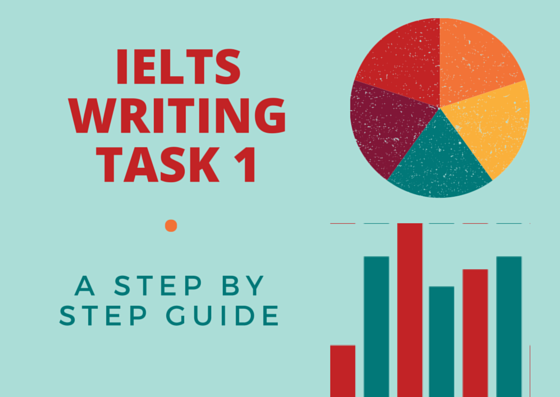
How To Write IELTS Task 1
Category List
Speaking (10)
Interview & Group Discussion (2)
English (3)
IELTS & TOEFL (23)
Pronunciation (6)
Vocab Display Page (6)
Grammar (5)
Vocab (24)
Writing (1)
From the Blog
-

IELTS Listening Resources
19 Jun, 2018| by adminGet tips, hints and suggestions plus lots of practice for the IELTS Listening Exam. Practice online or download the material so …
-

IELTS Speaking Resources
17 Jun, 2018| by adminFind our more about the speaking section of the IELTS Exam and get practical help learning how to answer common questions and to…
-

Academic Word List
16 Jun, 2018| by adminView, download and study the AWL or Academic Word List which includes nearly 600 of the most used words in Academic settings. A …
-
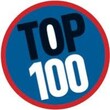
100 Most Common Lists of English Words
15 Jun, 2018| by adminDownload lists of the 100 most common nouns, verbs, adverbs and adjectives in the English language to help improve your vocabula…
-
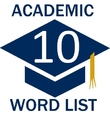
Academic Word List - Group 10
14 Sep, 2016| by adminThe tenth and final section of the Academic Word List. Free Download of the list to help you practice.
-
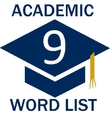
Academic Word List - Group 9
20 Apr, 2016| by adminThe 9th installment of the Academic Word List. Strengthen you word power with this essential list of words that appear frequentl…
-
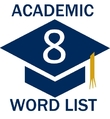
Academic Word List - Group 8
03 Apr, 2016| by adminThe eighth group of words in the Academic Word List containing words 421-480. Great vocabulary for IELTS, TOFEL and GRE.
-
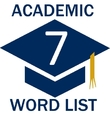
Academic Word List - Group 7
26 Mar, 2016| by adminThe 7th group of words in the Academic Word List. Improve your vocabulary with the words you need and perform well in high level…
-
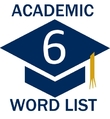
Academic Word List - Group 6
16 Mar, 2016| by adminThe sixth group of words in the Academic Word List. The AWL is a list of over 500 words that are likely to appear in academic se…
-
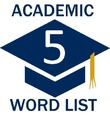
Academic Word List - Group 5
08 Mar, 2016| by adminThe fifth installment of the Academic Word List. This list contains more than 500 words that are likely to appear in academic si…
